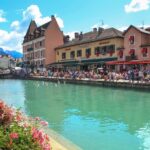- Aude Hermantier
- Normandie, Normandie, The best of France and its regions, Your guide: a committed professional
The Best Normandy Tours : TOP 5
Normandy is a region in northwestern France that is known for its rich history, picturesque landscapes, and charming seaside towns. Here are the best tours you may experience.
Normandy Tours : The Best Experiences
The Mont Saint Michel Abbey

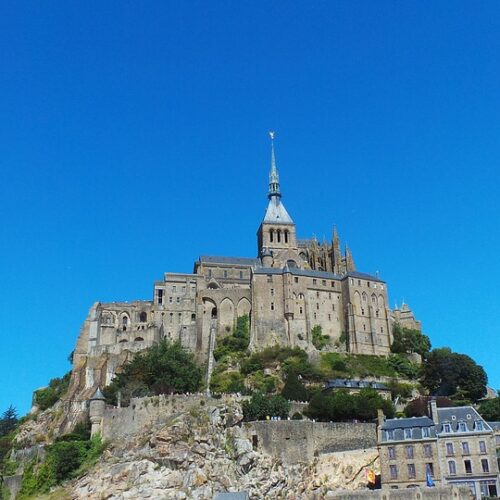
Mont Saint Michel is a tidal island and a commune in Normandy, France. It is located about one kilometer off the country’s northwestern coast, at the mouth of the Couesnon River, near the border of Brittany and Normandy.
The Mont Saint Michel has a long and fascinating history, dating back to the 8th century when a small community of monks established a hermitage on the island. Over the centuries, it grew into a major pilgrimage site and a symbol of Christian faith in France. The abbey and the village that grew around it were fortified over time, becoming a strategic stronghold during various wars and conflicts, including the Hundred Years’ War.
Today, the Mont Saint Michel is a popular tourist attraction, visited by millions of people each year. Visitors can explore the narrow, winding streets of the village, visit the abbey and its museums, and enjoy breathtaking views of the surrounding landscape from the island’s ramparts. The site has also been designated as a UNESCO World Heritage Site.
The D Day Landing Beaches 🇺🇸 🇬🇧 🇨🇦

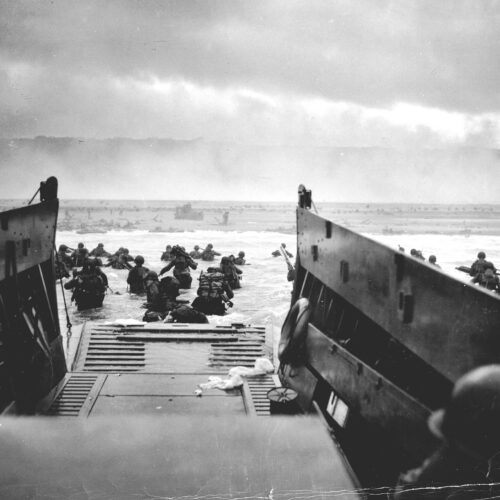
The D-Day landing beaches are a series of beaches along the coast of Normandy, France, where the Allied forces landed on June 6, 1944, during World War II. These beaches have become historic sites and are popular destinations for visitors to learn about the events of D-Day and pay tribute to the soldiers who fought and died there. Here are some of the top sights to see when visiting the D-Day landing beaches:
Omaha Beach: This was the site of the bloodiest fighting on D-Day, and is now home to the Normandy American Cemetery and Memorial, which contains the graves of over 9,000 American soldiers.
Utah Beach: This was one of the least fortified beaches and was the first to be captured by the Allies. Today, it is home to the Utah Beach Museum, which tells the story of the landings and the battles that took place there.
Pointe du Hoc: This was a strategic location for the Germans, who had fortified it with artillery batteries. The site is now a national monument, with preserved bunkers and craters from the bombing.
Arromanches-les-Bains: This town is home to the Mulberry Harbour, a temporary harbor that was built by the Allies in just a few days after the landings. The remains of the harbor can still be seen today, along with a museum that tells the story of its construction.
Sainte-Mère-Église: This town was the site of a famous paratrooper landing, and a memorial to the 82nd Airborne Division can be seen in the town square. The town also has a museum dedicated to the D-Day landings.
Visiting the D-Day landing beaches is a moving and educational experience that offers a glimpse into one of the most significant events of the 20th century.
The Bayeux Tapestry
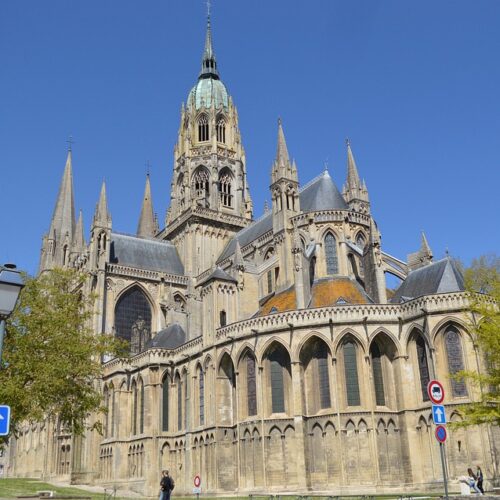
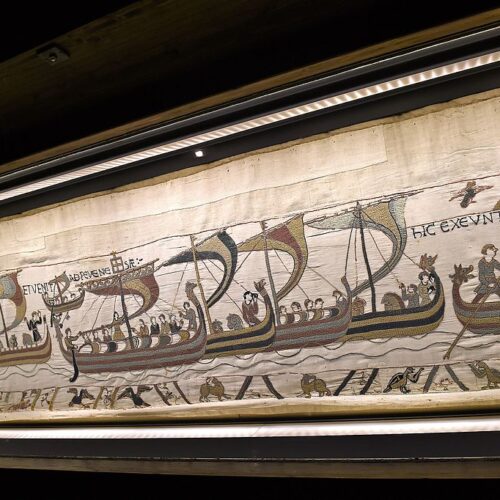
The Bayeux Tapestry is an embroidered cloth, nearly 70 meters long, that tells the story of the Norman conquest of England in 1066. It is one of the most famous and well-preserved tapestries in the world, and is considered a masterpiece of medieval art. Here’s what you need to know about the Bayeux Tapestry:
History: The tapestry was likely made in the 1070s, just a few years after the Norman conquest of England. It was created by English embroiderers, possibly in Canterbury, and depicts the events leading up to the Battle of Hastings and the Norman victory over the English king, Harold.
Content: The tapestry tells a story in a series of scenes, with Latin inscriptions describing the events. The scenes include the oath of loyalty of Harold to William, the departure of Harold for Normandy, the Battle of Hastings, and the death of Harold. The tapestry also includes many details of medieval life, such as clothing, weapons, and architecture.
Conservation: The tapestry has been carefully preserved over the centuries and is now on display at the Centre Guillaume le Conquérant in Bayeux, France. It is displayed in a specially designed museum that controls temperature and humidity to prevent deterioration of the fabric.
Interpretation: The meaning of some scenes on the tapestry is open to interpretation, and historians and scholars have debated the exact meaning of certain events. For example, it is unclear whether Harold was shot in the eye with an arrow, as depicted on the tapestry, or whether he died from other injuries.
Legacy: The Bayeux Tapestry has had a lasting impact on popular culture and art. It has been the subject of many books, films, and documentaries, and has inspired countless artists and designers. It is also considered an important source of information about medieval life and warfare.
Visiting the Bayeux Tapestry is a must for anyone interested in medieval history or art. It offers a unique glimpse into the events and culture of the medieval period, and is a testament to the skill and artistry of the embroiderers who created it.
The Rouen cathedral
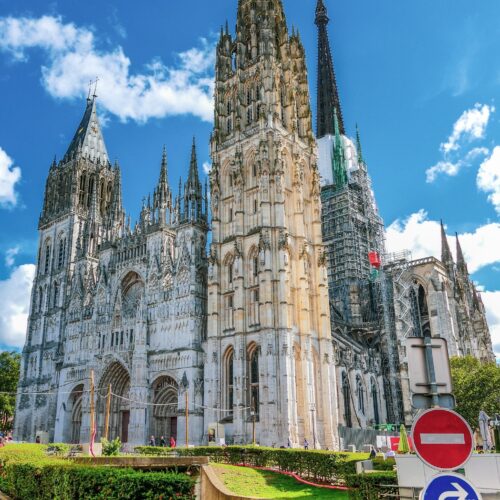
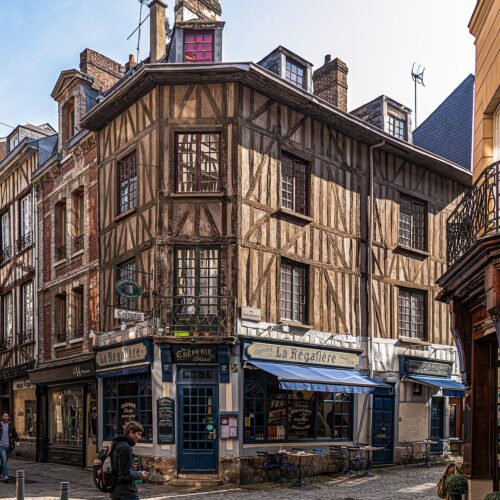
The Rouen Cathedral, also known as the Cathedral of Notre-Dame de Rouen, is a stunning example of Gothic architecture located in the city of Rouen, in the Normandy region of France. Here’s what you need to know about this historic cathedral:
History: The cathedral was first built in the 12th century, but has undergone numerous renovations and additions over the centuries. It was damaged during World War II, but has since been restored.
Architecture: The Rouen Cathedral is a masterpiece of Gothic architecture, with towering spires, intricate stonework, and beautiful stained glass windows. The facade features a mix of Gothic and Renaissance styles, with elaborate carvings and sculptures.
Art: The cathedral is home to many important works of art, including the tomb of Richard the Lionheart, the 14th-century stained glass windows in the choir, and the 16th-century Renaissance organ.
Joan of Arc: The Rouen Cathedral is closely associated with Joan of Arc, who was famously burned at the stake in Rouen in 1431. A cross marks the spot where she was executed, and a statue of Joan of Arc can be seen inside the cathedral.
Visitor information: The Rouen Cathedral is open to visitors daily, with guided tours available in multiple languages. There is a small fee to enter the cathedral, but it is well worth it to see the stunning architecture and art inside.
Visiting the Rouen Cathedral is a must for anyone interested in Gothic architecture, art, or French history. It is a beautiful and awe-inspiring building that has stood the test of time and continues to be an important cultural landmark in France.
The Etretat Cliffs

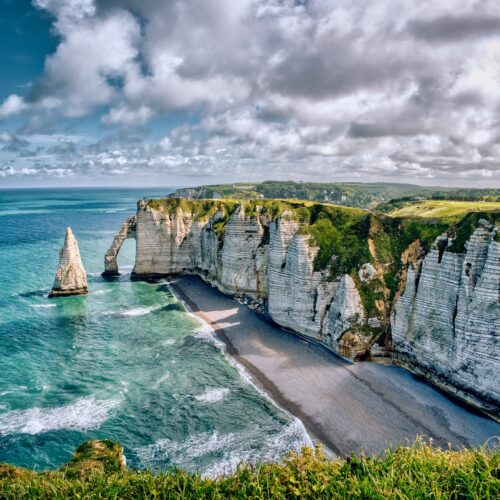
The Etretat cliffs are a famous landmark located in the town of Etretat on the coast of Normandy, France. These majestic cliffs are made of white chalk and flint and rise up to 90 meters (300 feet) above the English Channel. The cliffs are a popular destination for tourists and nature lovers, offering stunning views of the sea and the surrounding countryside.
The two most famous formations of the Etretat cliffs are the “Porte d’Aval” and the “Porte d’Amont.” The Porte d’Aval is a natural arch that stretches out over the water, while the Porte d’Amont is a smaller arch that is located further inland. Both formations are breathtaking and have inspired many artists and writers over the years.
Visitors can take a walk along the cliff path to enjoy the stunning views and visit the many viewpoints along the way. There is also a beach at the base of the cliffs where visitors can relax and enjoy the scenery. The town of Etretat itself is charming and offers many shops, cafes, and restaurants to explore.
Overall, the Etretat cliffs are a must-see destination for anyone visiting Normandy or the northern coast of France.


